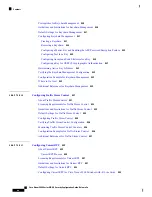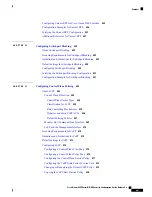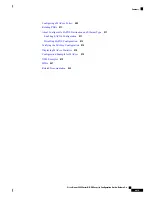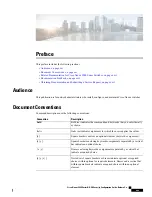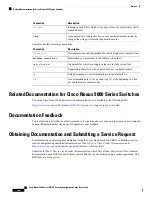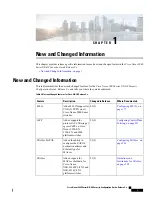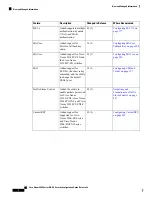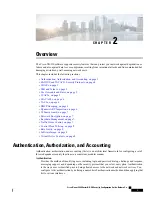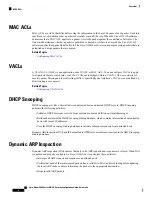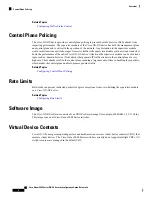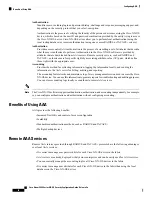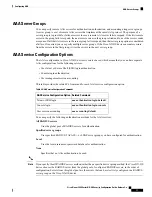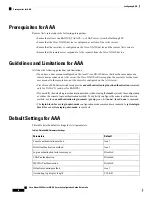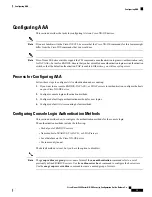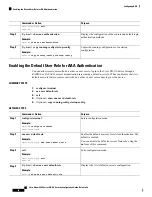
DAI can determine the validity of an ARP packet based on valid IP-to-MAC address bindings stored in a
DHCP snooping binding database. This database can also contain static entries that you create. If the ARP
packet is received on a trusted interface, the device forwards the packet without any checks. On untrusted
interfaces, the device forwards the packet only if it is valid.
IP Source Guard
IP Source Guard is a per-interface traffic filter that permits IP traffic only when the IP address and MAC
address of each packet matches one of two sources of IP and MAC address bindings:
• Entries in the DHCP snooping binding table.
• Static IP source entries that you configure.
Filtering on trusted IP and MAC address bindings helps prevent attacks that rely on spoofing the IP address
of a valid host. To circumvent IP Source Guard, an attacker would have to spoof both the IP address and the
MAC address of a valid host.
Password Encryption
The Advanced Encryption Standard (AES) password encryption feature stores all existing and newly created
clear-text passwords for supported applications (currently RADIUS and ) in the strong and reversible
type-6 encrypted format. A master encryption key is used to encrypt and decrypt the passwords. You can also
use this feature to convert all existing weakly encrypted passwords to type-6 encrypted passwords.
Related Topics
Configuring Password Encryption
Keychain Management
Keychain management allows you to create and maintain keychains, which are sequences of keys (sometimes
called shared secrets). You can use keychains with features that secure communications with other devices
by using key-based authentication. The device allows you to configure multiple keychains.
Some routing protocols that support key-based authentication can use a keychain to implement a hitless key
rollover for authentication.
Related Topics
Configuring Keychain Management
Traffic Storm Control
Traffic storm control (also called traffic suppression) allows you to monitor the levels of the incoming traffic
over a 1-second interval. During this interval, the traffic level, which is a percentage of the total available
bandwidth of the port, is compared with the traffic storm control level that you configured. When the ingress
traffic reaches the traffic storm control level that is configured on the port, traffic storm control drops the
traffic until the interval ends.
Cisco Nexus 9000 Series NX-OS Security Configuration Guide, Release 9.x
7
Overview
IP Source Guard


